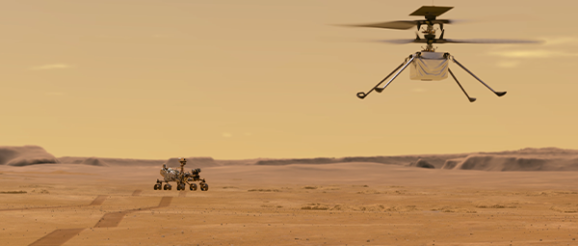Journey to Mars: How our collaboration with Jet Propulsion Laboratory fostered innovation [video]

Inventing breakthrough technologies that have positive impact and meet society’s needs is at our core. We also believe in fostering collaborations that drive innovation. That’s why Qualcomm Technologies, which includes Qualcomm Government Technologies and Qualcomm CDMA Technologies, is pleased to share the hard work we’ve been doing with NASA Jet Propulsion Labs (JPL) in developing technologies and solutions that power the Mars helicopter,
The Mars helicopter project has been in development since 2014 and is the culmination of rigorous testing and innovation. The project is meant to be a technology demonstration by JPL to showcase how autonomous flight can expand the horizon of space exploration, research, and data
The rigors of space pose unique challenges to operating a helicopter on Mars — challenges our Qualcomm Flight Platform, is capable of addressing. The main hurdle is operation itself; due to signals taking minutes to arrive, controlling a helicopter via remote control in real time is impossible. The helicopter must instead receive commands for autonomous operation transmitted from millions of miles away and delayed by 3-22 minutes.
In addition to flexible autonomous functionality, Martian radiation and atmospheric conditions were also important considerations for JPL in determining the right choice of robotics platform. Extreme temperatures and temperature cycling can wear out parts very quickly. Plus, some forms of space radiation will gradually or abruptly damage silicon. Normally, thorough testing would be ideal, along with space hardening. Through JPL’s analysis, they were able to determine that certain properties of the Qualcomm Flight technology would reduce risk of faults and would qualify the needs for the first flight on another planet.
Qualcomm Flight was originally developed from the ground up with autonomous flight in mind. The platform focuses on technological benefits typically aimed at consumer drone technology, such as 4K ultra-HD video, heterogeneous mobile computing, navigation via visual inertial odometry, and flight assistance — all in an extremely small and durable package. These were all features that came to mind when JPL considered the constraints of remotely operating a helicopter on Mars, and the complex algorithms the helicopter would need to compute. Autonomous flight by a helicopter on Mars is critical to navigating areas the Rover cannot easily access and opening new possibilities for exploration, obtaining high resolution images, and more ground covered through faster travel.
A major factor that helped us get a head start in our collaboration with JPL was our already extensive testing methodology for commercial technology.
In addition to enabling the autonomous functioning of Ingenuity, Qualcomm Flight is also used in the communication system of the Mars Rover. The computing capabilities of Qualcomm Flight on the Rover processes the photos taken by the helicopter. This allows both Ingenuity and the Rover to work in tandem to gather and prepare the best possible photos that will be sent back to the JPL team on Earth.
